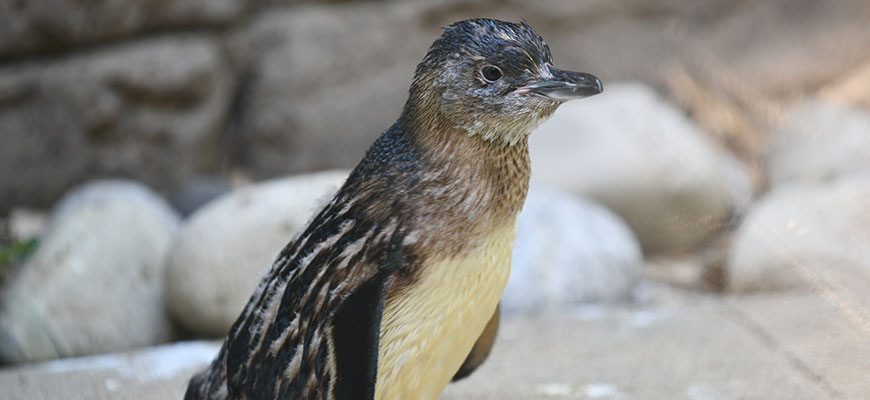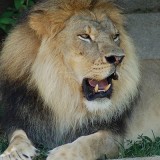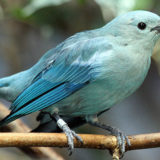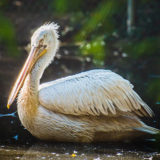Also known as the Little/Little Blue penguin
Eudyptula minor – means “good little diver”
RANGE
Year-round residents of their island and mainland locations in the Southern Hemisphere. Found primarily in Australia, also in New Zealand and Chile.
HABITAT
Temperate waters. Inhabits offshore islands, preferably with rocky shorelines as well as mainland sites near or in urbanized areas.
LIFE SPAN
Nature: about 6 years average
Managed systems: 20 years +
SIZE AND APPEARANCE
Smallest of all penguin species.
Height: 13 – 17 inches
Weight: Approximately 3 pounds
Head, flippers and back are typically slate blue, although color shade varies by geographic location; front of body is white.
DIET
- Adult Fairy Penguins usually forage every day, up to 15 miles from shore in shallow waters where prey is close to the surface.
- Diet varies seasonally, but small fish such as anchovy, sardines, sprat, krill and squid are preferred
- Diet is impacted by seasonal changes in ocean currents and temperature that affect food supply.
- Prey is captured by diving to average depths of about 65 feet (20 meters).
- Dives last about 20 – 35 seconds.
- Small fish are swallowed head first underwater. Fish more than 1.5 inches long are eaten at the water surface
REPRODUCTION
- Little penguins are highly social and live in colonies.
- Males/females pair and bond for life.
- Can raise two pairs of chicks in one breeding season, an ability unique among penguins
- Reproductively mature at 3 years of age
- Live/nest in burrows which they may reuse the previous year’s burrow or males may construct a new one.
- Burrows vary by location, underground burrows under thick grass roots are preferred or may be in natural rock crevices
- Burrows are usually about 6.6 feet (2 meters) apart and lined with grasses, leaves, or seaweed
- In mainland urban areas, nesting may occur in man-made cavities under buildings, stacks of wood, and even railroad tracks
- Also nest in artificial nest boxes supplied by humans
- A clutch of two eggs are laid about 2 – 3 days apart and are incubated for about 35 days and then hatch
- Dedicated parents and care for the chicks equally
- At 8 weeks the juvenile penguins are the same size as their parents and are now independent (molted their down feathers and replaced with waterproof feathers).
BEHAVIOR
- Leave land at dawn under cover of darkness
- Spend the day at sea foraging in small groups
- Return to land at dusk, again under cover of darkness as protection from predators
POINTS OF INTEREST
- Penguins are flightless birds (in the air)
- Each bird has about 10,000 feathers which is 3 to 4 times the feather density of typical flying birds
- The feather bases are very downy trapping air and providing an effective insulation when the penguin is at sea
- The feather tips are very stiff which prevents them being compressed by water pressure, stopping the insulating air layer from being squeezed out
- Their countershading, dark when viewed from above, and light when viewed from below, protects them from predators swimming above or below them
CONSERVATION
- Population of Fairy penguins is considered to be stable in most locations; Approximately 1.2 million birds (estimated)
- Declines observed in urbanized areas and island locations where predation is high
- Oil pollution from wrecks and deliberate discharge in their foraging areas are one of the biggest threats as well as fishing nets from commercial fisheries
- Small size of Little penguins and the proximity of their habitats to urbanization makes them especially vulnerable to a variety of significant threats resulting from human activities such as exotic invasive species like foxes, cats, ferrets, dogs
- Other threats on land include plastic pollution, roadkill, human harassment, tourism, and development destroying nesting sites
- Natural predators include leopard seals, killer whales, gulls, and white-bellied sea eagles
- Sea level rise as a result of global warming may inundate coastal breeding habitat and rising coastal ocean temperature may reduce food availability





